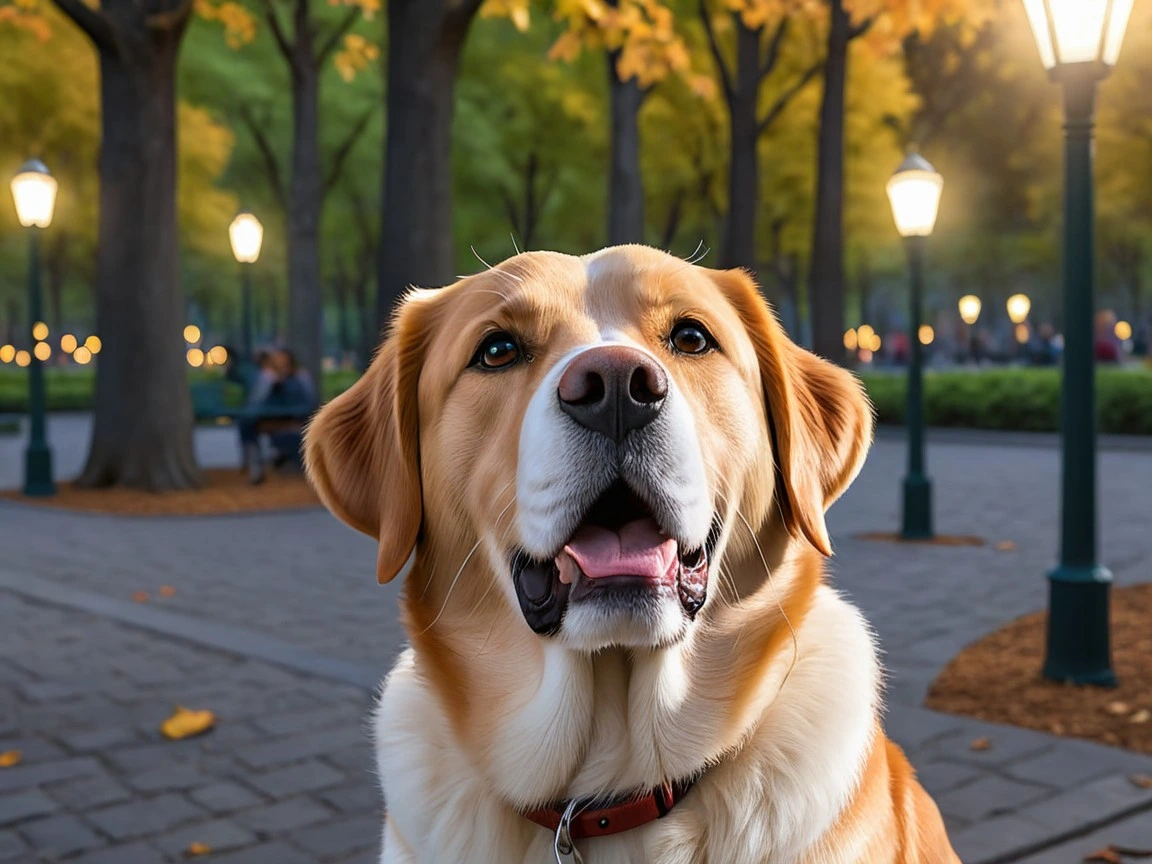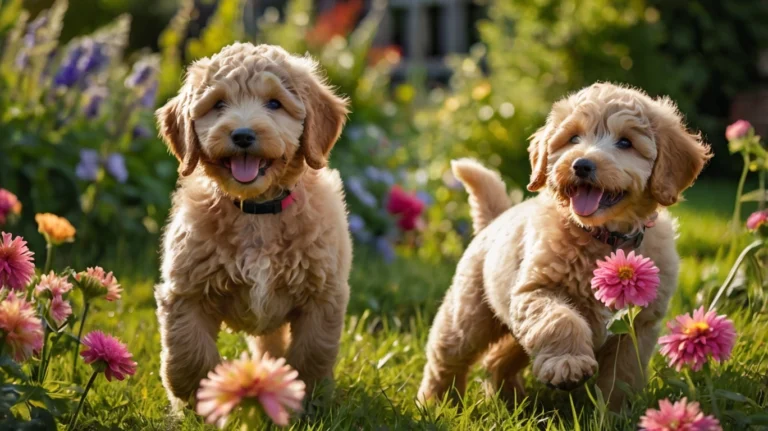What causes your dog to give you the side-eye? Understanding dog behavior.
Has your furry friend ever looked at you sideways? It’s like they’re silently judging you. This behavior, known as the “side eye” or “sideye,” shows more than just cuteness. It opens a window into your dog’s feelings and how they talk to you. Learning why they do this can help you understand them better and grow closer.
The ‘side eye’ may be subtle, but it carries significant meaning. Dogs use it to show many feelings, like curiosity, doubt, annoyance, or even disapproval. As you learn about your dog’s side-eyeing, you’ll discover more about their personality and your relationship.
Table of Contents
The Curious Case of the Side Eye
Ever seen your dog look at you sideways? Their eyes might be narrowed and their brow furrowed. This is called the “side eye” or “dog whale eye.” It’s a way dogs communicate and can tell you a lot about how they’re feeling.
Decoding the Canine Sideye
Dogs use the side eye to show different feelings. It can mean they’re stressed or unsure. By looking away, they can watch their surroundings while feeling in control.

Recognizing the Side Eye Signals
When you see a dog side eyeing, look at their whole body. A side eyeing dog might also show:
- Tense or stiff posture
- Ears pulled back or flattened
- Tight, closed-mouth expression
- Whale eye, when the whites of the eyes become noticeable.
Knowing these signs helps you understand your dog better. It can make your relationship stronger and more peaceful.
| Emotion | Side Eye Signals |
| Discomfort | Narrowed eyes, tense body language, partial head turn |
| Disapproval | Intense stare, furrowed brow, tight-lipped expression |
| Uncertainty | Sideways glance, cautious approach, vigilant monitoring |
Understanding the dog whale eye and other side-eyeing behaviors can give you insight into your dog’s feelings. It can also make your bond stronger through thoughtful interactions.
Side Eye Dog: Interpreting the Doggy Glare
Ever noticed your side eye dog looking at you with curiosity? This behavior, called the “side eye,” offers a peek into your dog’s thoughts. But what does your dog sideye really mean?
The side eye dog can show many emotions. It’s a quiet but strong way for your dog to share their feelings. They might be feeling scared, upset, or just want your attention.
Decoding the Canine Side Eye
When your dog sideye looks at you sideways, they might be saying a few things:
- Uncertainty or Discomfort: Your pup might feel unsure or uneasy, like when they see a new face or thing.
- Annoyance or Displeasure: The side eye dog can also mean they’re annoyed or unhappy with something you did.
- Desire for Attention: Sometimes, the dog sideye is just a way for your dog to ask for love and attention.
By watching the situation and your dog’s body language, you can understand what their sideways look means. This guides you to respond effectively.
Common Triggers for Side-Eyeing
The dog side eyeing meme is quite fascinating. But, it’s important to know why dogs do this. Territorial behavior and fear or anxiety are two main reasons.

Territorial Behavior
Dogs protect their space and things they care about. If they feel someone is intruding, they might give a sharp, sideways look. This can happen when a new person or pet comes in, or when someone moves into their spot.
Fear or Anxiety
Dogs with fear or anxiety might also give the side-eye. It’s a way for them to show they’re not comfortable. This could be because of loud noises, sudden movements, or someone they don’t know.
Knowing these reasons can help pet owners. They can take steps to make their dogs feel safer and more at ease.
Breed Differences and Side-Eyeing Tendencies
Exploring the “side eye dog” world reveals that some breeds side-eye more than others. The breed’s temperament, face shape, and history all affect how often a dog gives the side-eye.
For example, herding breeds like the Border Collie often stare intensely. This makes them more likely to side-eye. On the other hand, hounds like the Basset Hound might not side-eye as much because of their unique face.
| Breed | Side-Eyeing Tendency | Explanation |
| Border Collie | High | Herding instinct and intense focus contribute to frequent side-eyeing behavior. |
| Basset Hound | Low | Facial structure and relaxed demeanor make them less prone to the side eye. |
| Pug | Moderate | Playful nature and expressive face can lead to occasional side-eyeing moments. |
Remember, while breed tendencies are helpful, each dog is unique. Understanding your side eye dog‘s breed can help you understand their expressions better.
“Dogs use the side eye as a discreet yet effective way to communicate, and it’s interesting to study how breeds vary in their use of it.”
Knowing how breed-specific traits affect side-eyeing can help you connect with your dog better. It’s a way to understand and bond with your furry friend on a deeper level.
Addressing Side-Eyeing with Positive Reinforcement
No need to worry if your dog gives you that sideways glance. You can change this behavior and strengthen your bond. The best choice is to use positive reinforcement training.
One good method is to reward your dog for calm, focused behavior. When they look at you without the side eye, praise and treat them. This makes them want to please you more.
It’s also important to find out why your dog is side-eyeing. Are they anxious or scared? Fixing these issues can stop them from using the “dog whale eye” as a defense.
- Use dog side eyeing meme training, like desensitization, to make your dog feel safer in stressful places.
- Make things that cause side eyeing positive by giving rewards and praise.
Building trust and a strong bond is crucial to reduce side-eyeing. With patience, consistency, and positive training, your dog will feel safer and more comfortable with you.
Conclusion
We’ve explored the fascinating world of the side eye in dogs. We’ve learned how to read their body language and what makes them give us that look. This journey has shown us how much our dogs think and feel.
Seeing the side eye as a way for dogs to communicate helps us bond with them. It lets us understand their needs and worries better. Using positive methods to show we care is key to helping them feel safe and loved.
As you keep exploring with your side eye dog, remember each dog sideye is special. Showing empathy and patience will make your bond stronger. This way, you’ll enjoy a happy and meaningful relationship with your dog for many years.
FAQ
What does it mean when my dog gives me the side eye?
When your dog looks at you sideways, it can mean different things. This look is often a sign of feeling uncomfortable, annoyed, or unsure. It might also mean they want your attention. Knowing your dog’s body language helps you understand what they’re trying to say.
Why do some dogs seem to side eye more than others?
Some dogs are more likely to give side-eye looks than others. This depends on their breed, personality, and how they were raised. For example, dogs like Huskies or Chow Chows might side eye more because of their bold nature.
What are common triggers for side-eyeing in dogs?
Dogs side eye for many reasons, like feeling scared, anxious, or protective. They might look at strangers who come too close or feel uneasy in certain situations. They also use it to ask for attention or show they’re not happy with something you’re doing.
How can I address side-eyeing behavior in my dog?
To fix side-eyeing, use positive training methods. Encourage your dog’s calm and confident behavior with positive reinforcement. Also, work on building trust and fixing any fears or anxieties. Being consistent and patient is crucial in changing your dog’s behavior.
Is the side eye in dogs always a sign of negative emotions?
No, the side eye isn’t always about negative feelings. It can also show curiosity, uncertainty, or a playful ask for attention. Always look at the whole situation and your dog’s body language to understand what they’re trying to say.







